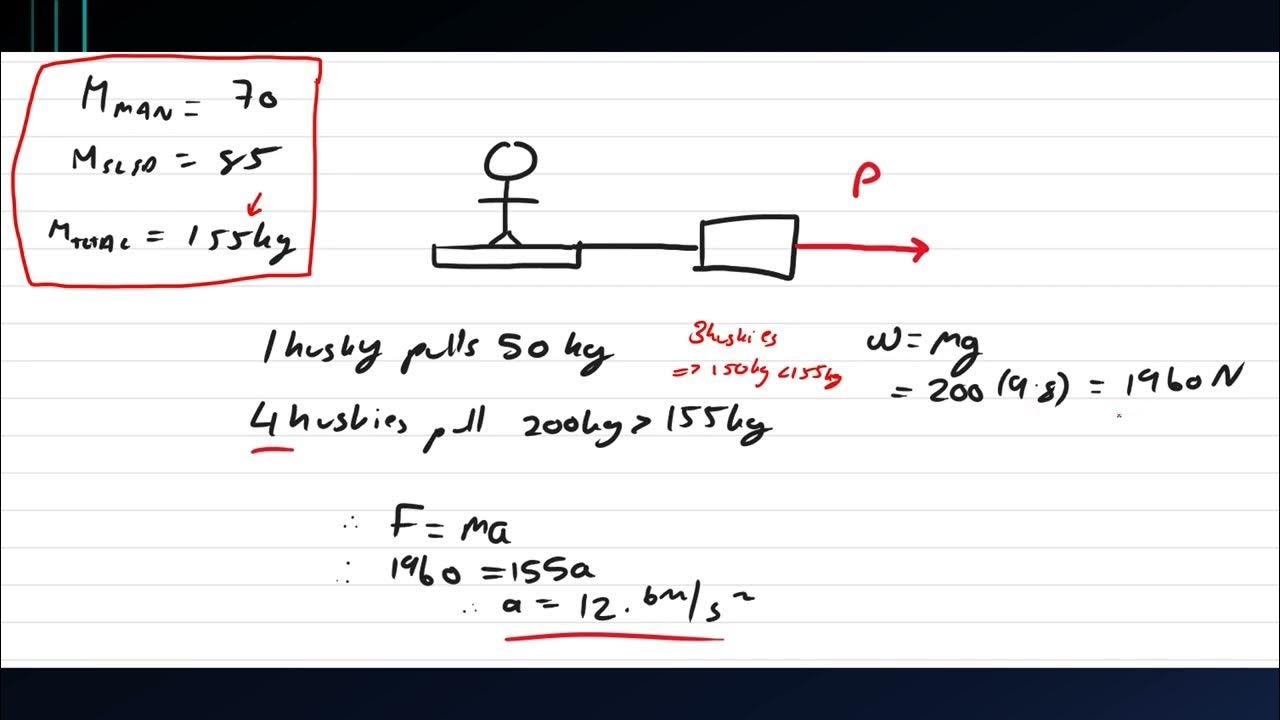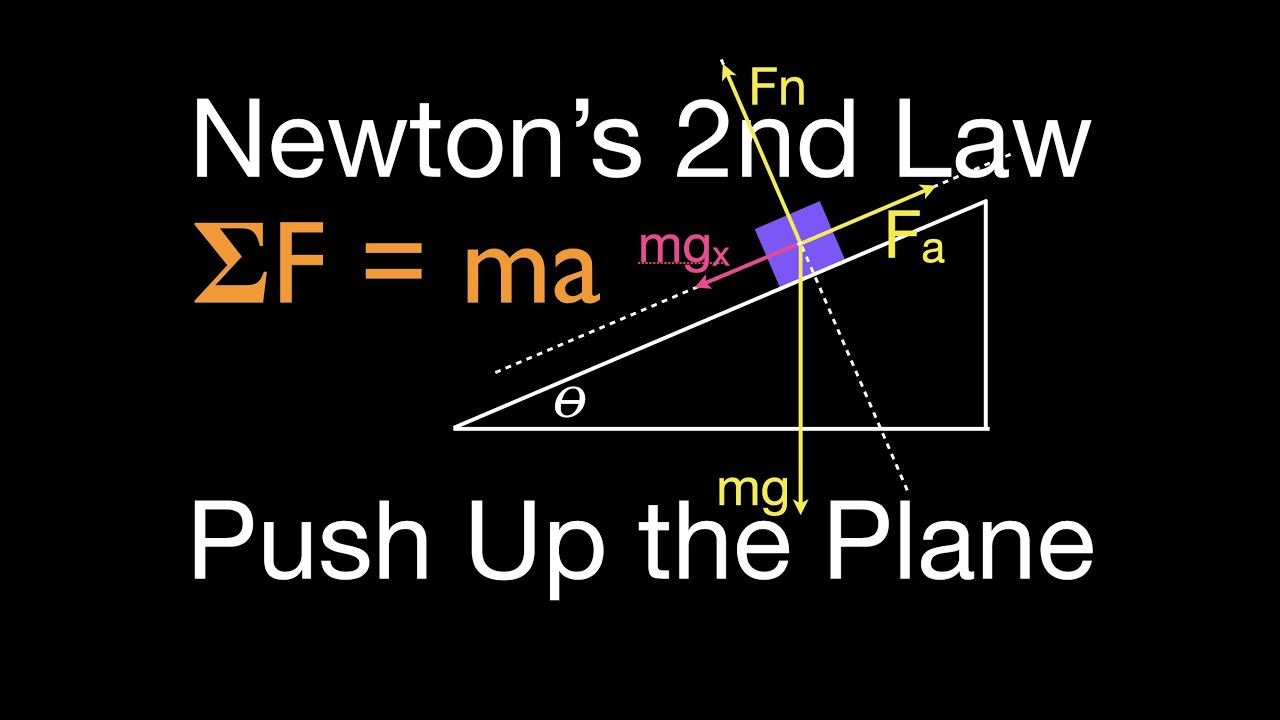Newton's 2nd 'law' of motion which is not supported by childhood experiments.
Scientism and the blind belief that vector maths describe reality. All the hail 'The Science', but which one?
Newton expressed his second law referring to momentum: “The instantaneous rate at which a body’s momentum changes is equal to the net force acting on the body.” (‘Instantaneous rate’, implies that the derivative is involved.) This can be given by the vector equation: F=dp/dt, reduced to the simpler F=mass x acceleration.
Newton, Youth and Scientism…
When I was younger and wiser, I had an argument with my science teacher. It appeared to me that Newton’s 2nd law of motion in which Force is equal to Mass times Acceleration (F=MA) was incorrect. Newton’s 2nd law is advertised as the ‘most important law in physics’. Yet in my youthful mind this defied common sense. I had taken 2 objects – a rock and a ping pong ball – and moved them along different surfaces and through different media.
I took notes and made calculations. I discovered that the force to move a rock or a light object such as a ping pong ball through mud, or up a hill, or through water, was intimately tied to friction, media and the angularity of incline and decline. I could find no evidence that my force was equal to the weight of the rock or ping pong ball, multiplied by an acceleration calculation.
Mass was important. Acceleration was evident but reliant on the force, media and angularity of the setting. The equation was therefore wrong and this was self-evident by my calculations which I proudly showed the teacher in which I adjusted the formula to add those 2 missing parameters – friction and incline or plane.
The response was discouraging. Interesting though not relevant, he said. Listen, he cautioned, this is Newton and this law is one of the most famous in science. Trust me he said, F=MA has been proven thousands of times for hundreds of years and includes friction and angles. The equation is just fine he concluded but this is a good effort and will help your grade he added.
This is typical of our society. How dare anyone challenge an apostle with mechanical experiments? If my experiments were wrong that would be self-evident. But saying don’t bother with them because it contradicts Newton is lazy. A blind belief now replaces physical science. F=MA is inaccurate and that should be discussed. It is manifestly incomplete.
F=MA defies common sense
F=MA cannot be proven to be true for many reasons, three of them are elucidated below.
First: Physics is only assembled from observations, then provisional generalisations and finally mathematical descriptions.
Physics cannot begin from axioms or defined beliefs, to mathematics, then to proven facts. This is backwards. Physics must flow from experiments, observations, and end in a description. Using force on an object does not equate into its mass times its acceleration in all frames of reference. Newton’s theory was only a thought experiment, unsubstantiated by actual experimentation. No one can show what experimentation Newton performed to arrive at his geometrical calculations.
In using Newton’s second law as the primary equation to find out the force needed to move a rock or ping pong ball through air, on a table, in water or mud, you will need to use other equations, such as the one for weight or one of the four kinematic equations which describe motion with or without constant acceleration, over a period of time. There is a difference between mass and weight for example, and differences in acceleration over time especially when the force of friction is in play. If we change the media to be air and drop the rock, we will also need to take into account gravity. The 2nd law is thus inaccurate.
Second: The equation is wrong. F=ma happens to be false and even as a vector equation it is incorrect.
Let’s assume – incorrectly – that space and time have a simple geometry; the proper version of the equation is F=dp/dt where p is momentum. Here dp/dt means the rate of change of momentum in time (t). This is what Newton determined but it was never validated in the way he intended.
The reason is that p or momentum =mv (mass x velocity) where v is velocity (acceleration, speed) and m is a velocity-independent mass. A mass at rest has no velocity dependence. This means that the mass of an object does not change no matter its velocity. F=ma can only be true if mass is truly independent of velocity. This must be true given that Relativity was invented as a fantasy world some 280 years after Newton outlined his theories of motion.
Einsteinian relativity, however, says mass is dependent on velocity. Mainstream science now has a problem. Using Einstein’s 1905 work, the mainstream averes that mass is dependent on velocity and increases with speed. This means Newton’s 2nd law of motion is wrong and needs to be rewritten.
Relativity’s assertion that mass increases with velocity is based on the velocity of the observer and can thus be rejected. I only add it here to highlight the internal conflicts within ‘science’. Even if we correctly disregard Relativity’s claim of mass dependence on velocity, the 2nd law of motion still does not work given the issues with the rate of momentum change and friction.
Third: Following from the second objection that the equation is wrong, F=MA is not what Newton derived nor what he meant.
Newton used geometry and vectors to illustrate thought experiments. He never mentions ‘mass’ for example in the way we have connected it with force and acceleration. Also, if we look at general geometry of F=MA, we know that these symbols including 'a' or acceleration have no fixed meaning. This a part of Richard Feynman’s criticism of the theory.
Feynman: “First, because Newton’s Second Law is not exact, and second, because in order to understand physical laws you must understand that they are all some kind of approximation.”
We can extend this criticism of Newton’s Second Law to his First.
Newton’s First Law
Newton's first law of motion states that a force is not needed to keep an object in motion. This is false though the disproof is always used as ‘proof’! Slide a book across a table and it will arrive in a rest position. The original force of sliding the book runs into the presence of the frictional force which arrests the movement. So, this law is incorrect.
You do need a force in the real world to keep an object in motion, unless that object is in vacuo or in ‘space’ where there is an absence of friction. Space is not a ‘vacuum’ so Newton’s assumption is without meaning or relevancy. Newton never bothered to explain friction or what is meant by ‘space’. He also never attempted to use mechanical experiments to justify his mathematical theories of motion. The first law is wrong, and the second law is based on the first law. Both are therefore inaccurate.
Belief systems and ‘Science’
Newtonian physics is a conceptual framework to help us simplify what we see around us. Most of what Newton published was already being worked on and might have been elaborated elsewhere. It is unlikely that Newton ‘invented’ his theorems de-novo. We do know that he was quite good at fudging his numbers and taking credit from the work of others. Einstein was a master of this as well. Memorizing his ‘laws’ is unhelpful without understanding the context of what he was trying to do, or what we are trying to accomplish with understanding movement.
The bottom line is that the ‘laws’ of motion are incomplete and inaccurate. Einstein’s Relativity negates the 2nd law of motion. Relativity is largely a nonsense of course so this does not mean much. Even dismissing Relativity we have many issues with F=MA that need remediation. This does not mean that we need to cynically dismiss Newton. But it does mean we should be updating his theorems with more accurate and credible equations based on real world experimentation.
Keep the above in mind when someone says ‘I follow the science’. Which science do you mean? If you follow Einstein’s Relativity, Newton’s 2nd law is invalidated. If you follow Newton you are implicitly rejecting Relativity.
All hail the masters.
==
Blackwell, R.J.: 1966, ‘Descartes’ Laws of Motion’, Isis, 57, 220-234
Gauld, C.F.: 1975, ‘Newton and the Second Law of Motion’, Australian Science Teachers Journal,21(1), 57-62.
Newton's Laws of Motion - Now and Then. Available from: https://www.researchgate.net/publication/374740425_Newton's_Laws_of_Motion_-_Now_and_Then








Unlike Einstein, Newton wasn’t guessing; he was measuring.
Your experiment didn’t disprove F = ma; it simply failed to test it properly. Rather than refuting Newton, it revealed a misunderstanding of what he clearly stated: a steady net force on a constant mass yields a steady change in motion; a principle he verified experimentally, not merely assumed.
You also imply Newton didn’t conduct experiments. Yet, as Chittenden wrote in his Life of Sir Isaac Newton (1846), “[of] all the books [Newton] ever wrote, there was one of colours and light, established upon thousands of experiments which he had been twenty years of making, and which had cost him many hundreds of pounds.”
And that was only his work on optics. If £200 then could buy a modest house, how do your backyard trials compare?
Had you so much as opened the Principia, you’d have seen that the distinction between mass and weight is literally on page one, where Definition I states:
“The quantity of matter is the measure of the same, arising from its density and bulk conjunctly… It is this quantity that I mean hereafter everywhere under the name of body or mass. And the same is known by the weight of each body; for it is proportional to the weight, as I have found by experiments on pendulums, very accurately made.” [Motte’s 1728 translation, Book I, p. 73]
The mainstream view that F is the "net force," which of course includes frictional forces and gravity, and they also acknowledge that Relativity would mean Newton's laws need to be rewritten, so I'm not sure how most of your critiques apply to the mainstream view on this one.